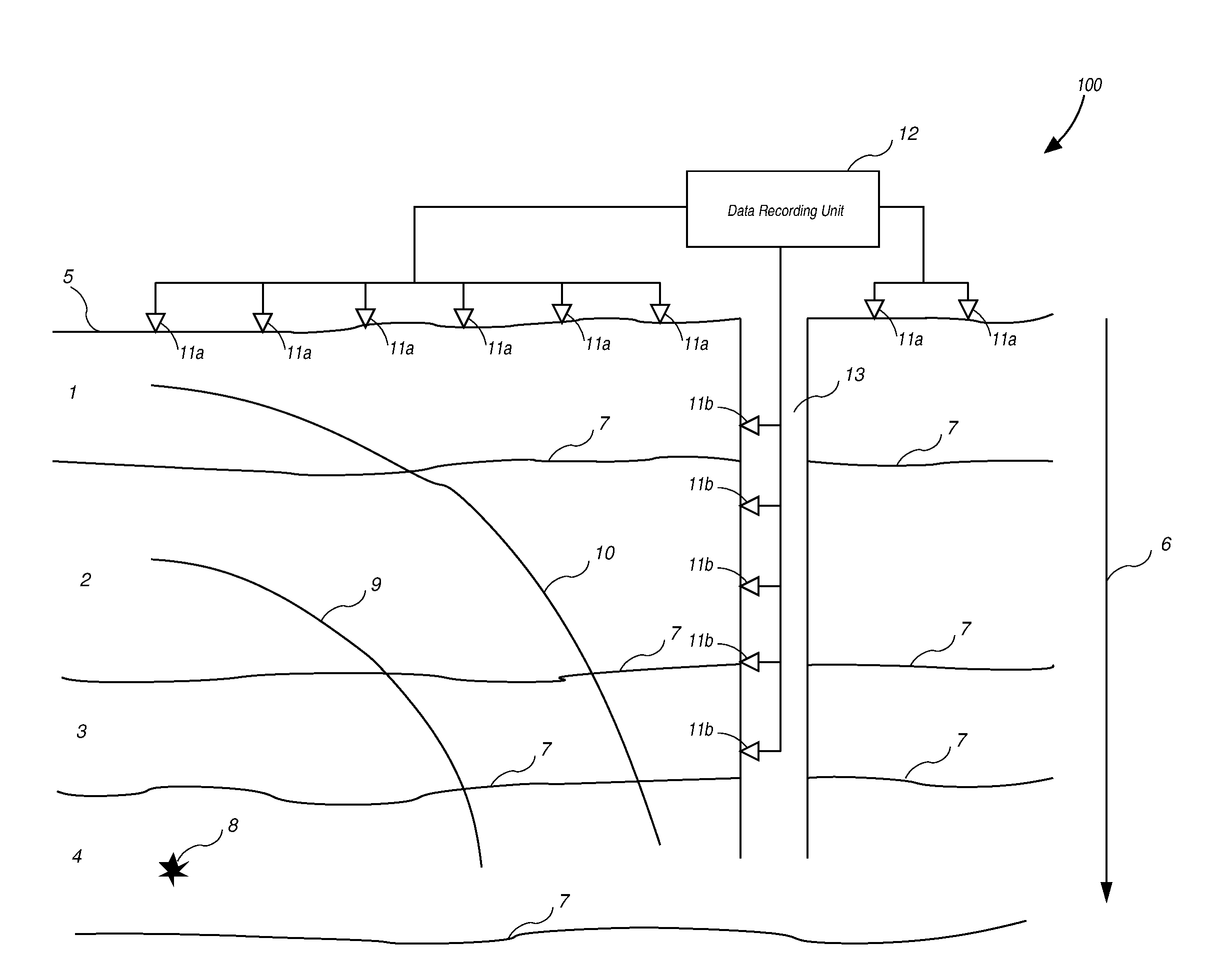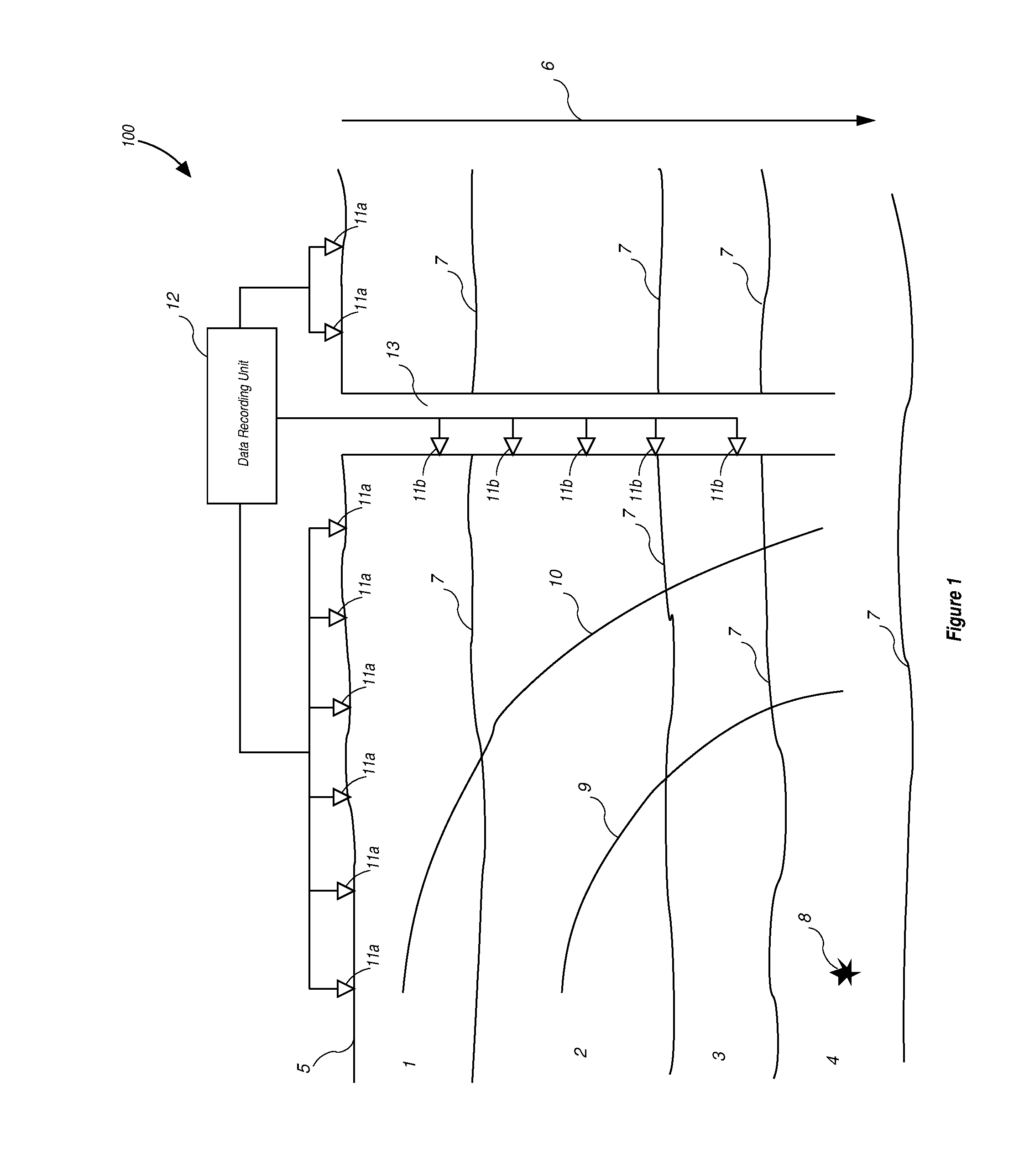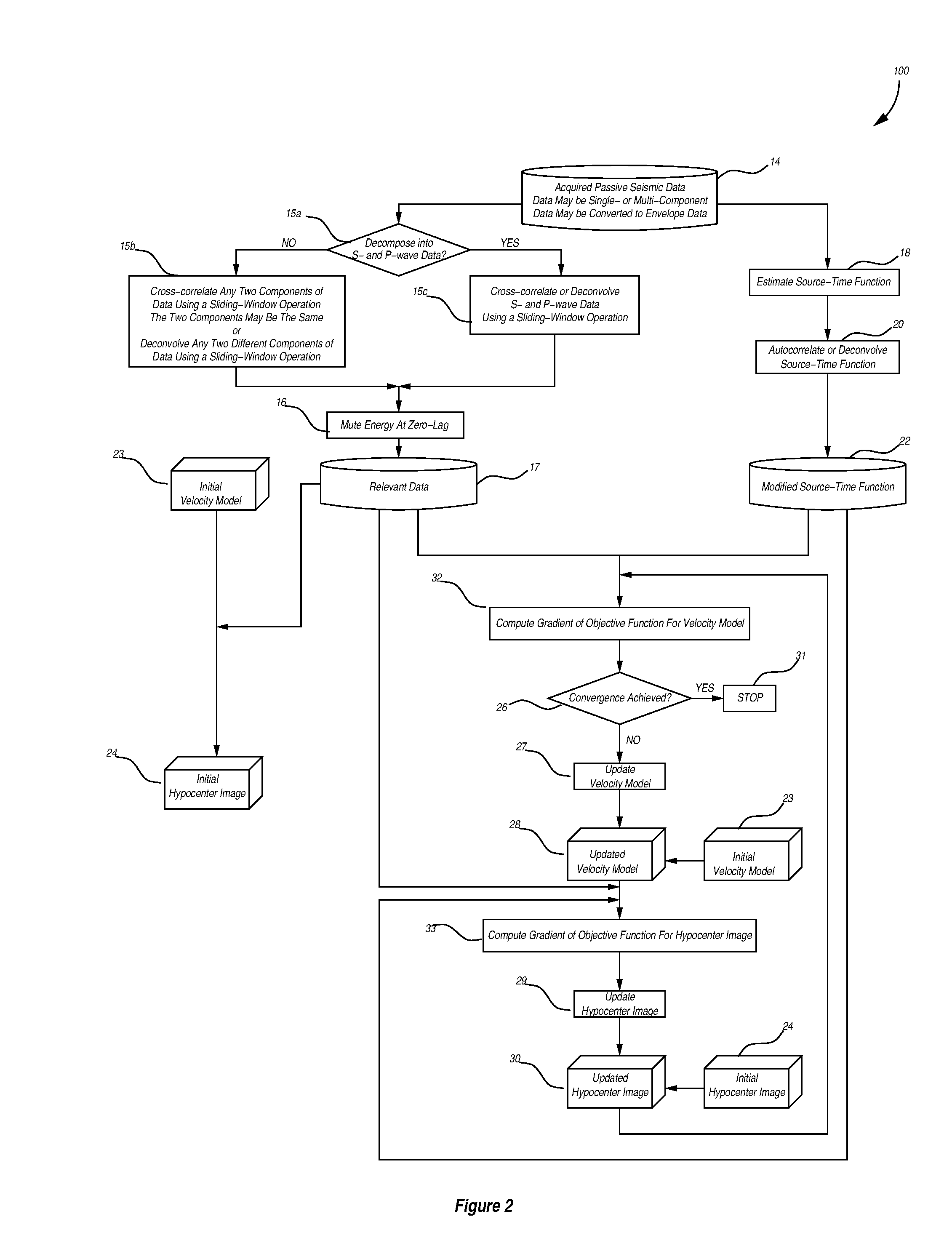Expedient Processing and Waveform Inversion of Seismic Data
a technology of seismic data and waveform inversion, which is applied in the field of seismic data expedient processing and waveform inversion, can solve the problems of not contributing to any production, not being able to accurately predict the effects of hydraulic fracturing, and being subject to an increase in confining stress in the rock, etc., and achieves rapid generation and processing of waveform data.
- Summary
- Abstract
- Description
- Claims
- Application Information
AI Technical Summary
Benefits of technology
Problems solved by technology
Method used
Image
Examples
example
[0058]FIG. 4 through FIG. 12 present a synthetic example of reducing the volume of microseismic data and inverting the resulting waveforms for obtaining said velocity combination V and source amplitude distribution using the method described in this invention.
[0059]FIG. 4 is the true compressional-wave velocity model VP that is used to generate the compressional-wave data. FIG. 5 is the true shear-wave velocity model VS that is used to generate the shear-wave data. The spatial extent of the model is 3.5 km in the x-direction and 2.37 km in the z-direction.
[0060]FIG. 6 shows the true compressional- and shear-wave velocity model combination V=VPVS / (VP−VS) of the velocity models in FIG. 4 and FIG. 5 that the reduced waveforms are sensitive to.
[0061]FIG. 7 shows the spatial locations of 80 sources used in generating the compressional- and shear wave data. The amplitudes of all the sources are the same and equal to unity. Receivers are located on all four boundaries of the model at an in...
PUM
 Login to View More
Login to View More Abstract
Description
Claims
Application Information
 Login to View More
Login to View More - R&D
- Intellectual Property
- Life Sciences
- Materials
- Tech Scout
- Unparalleled Data Quality
- Higher Quality Content
- 60% Fewer Hallucinations
Browse by: Latest US Patents, China's latest patents, Technical Efficacy Thesaurus, Application Domain, Technology Topic, Popular Technical Reports.
© 2025 PatSnap. All rights reserved.Legal|Privacy policy|Modern Slavery Act Transparency Statement|Sitemap|About US| Contact US: help@patsnap.com



